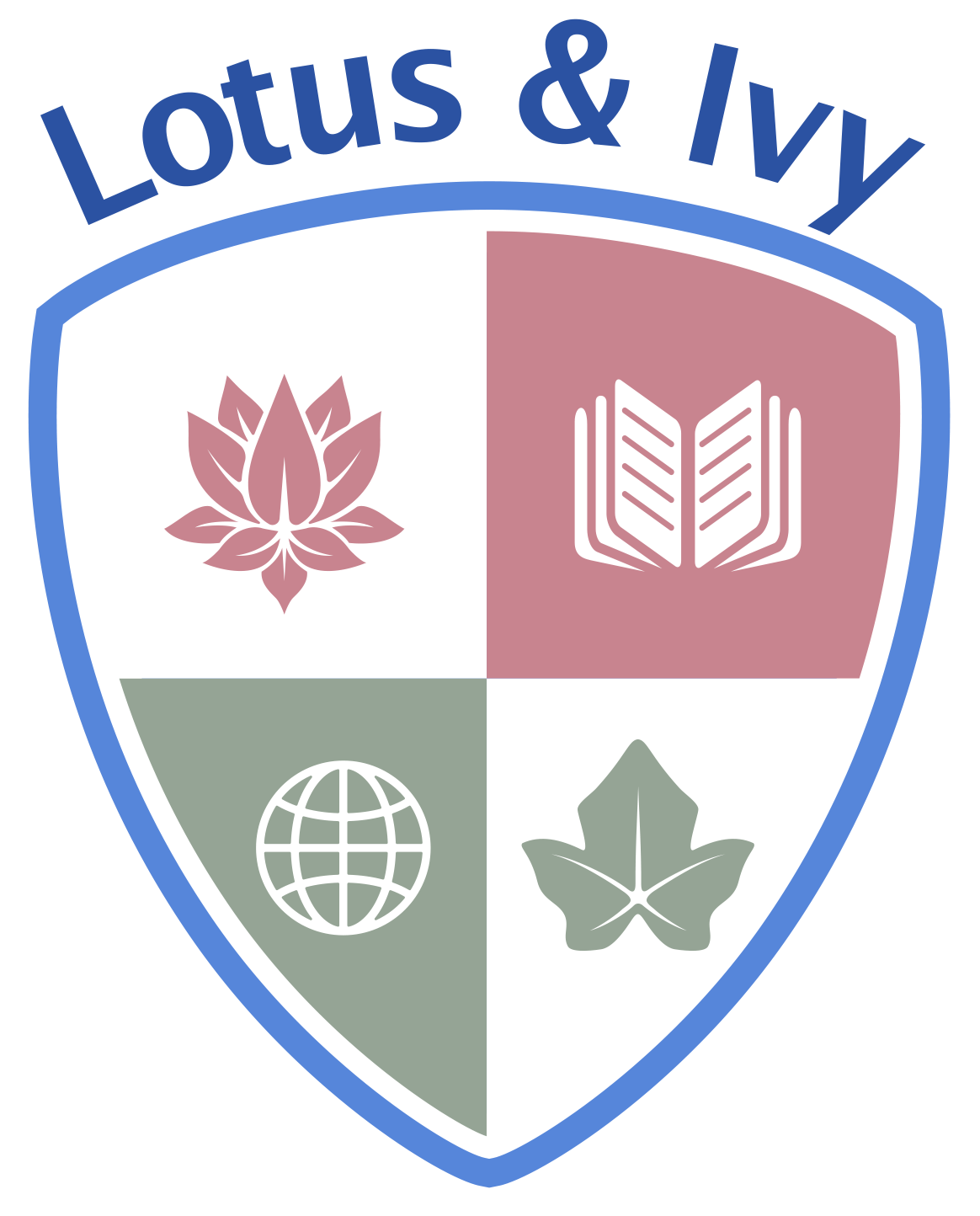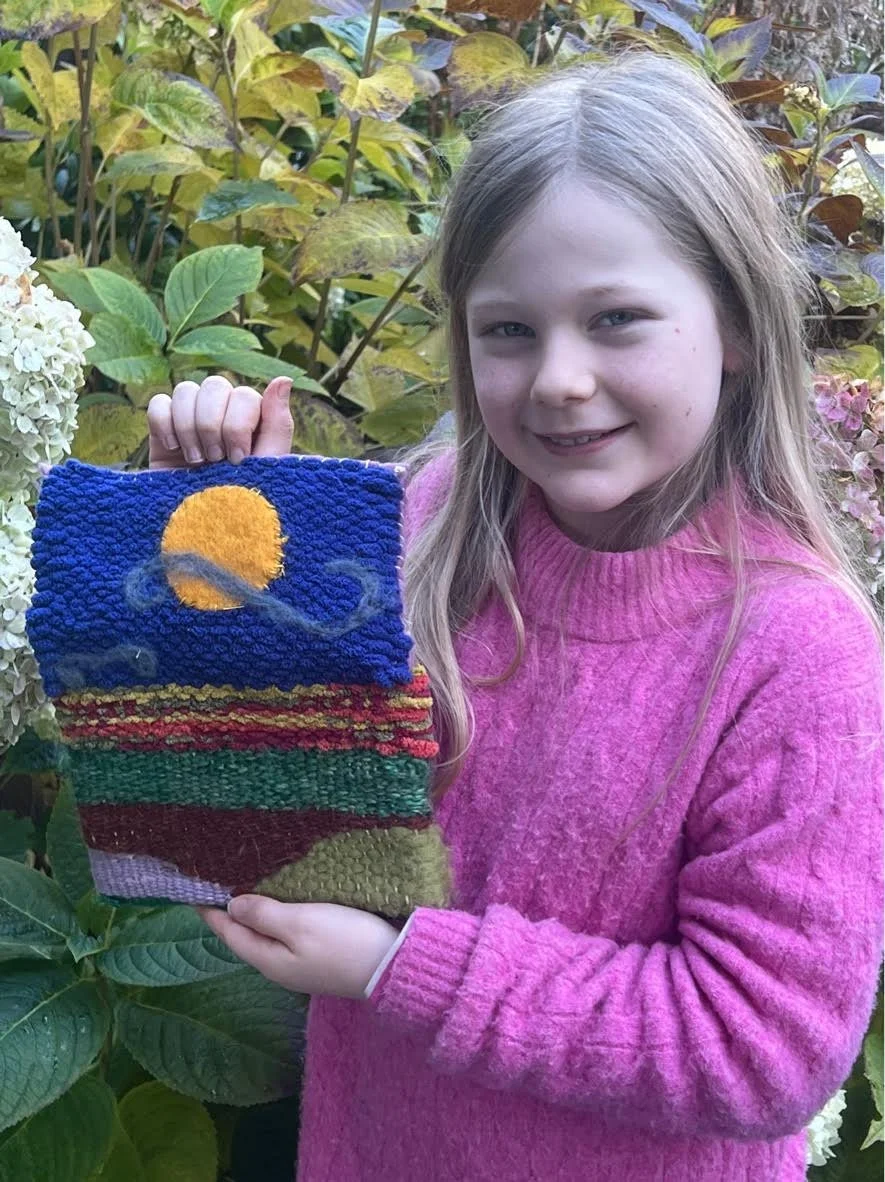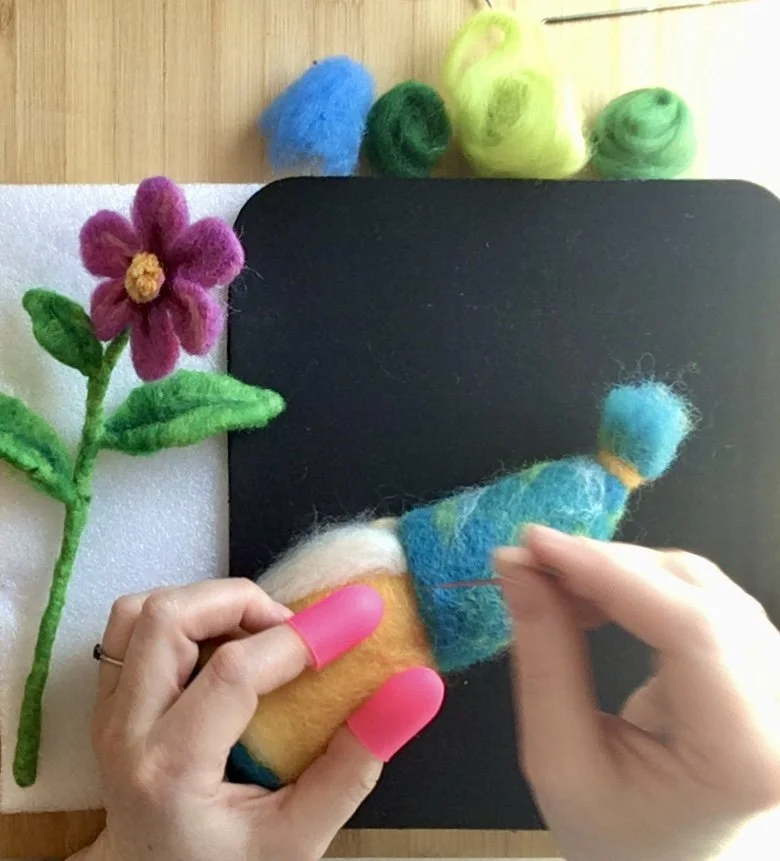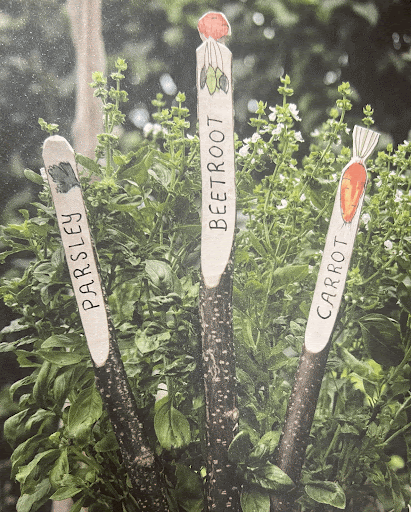Class 3 Complements
Click one below to learn more:
Cursive
HANDWORK
DiATONIC FLUTE
Needle felting & PRACTICAL ARTS: Animal Adaptations
Eurythmy
WOODWORKING
THEATRE & SPEECH
Cooking
WET-ON-WET WATERCOLOR PAINTING
World Languages: Spanish & German
Exercise, adventure, & Circus
Seasonal Crafting
Our class size is 14 students, allowing the teacher to get to know each student and creating a school-family environment during class.
Handwork: Continuing Knitting or Embroidery & Cross Stitch or Crochet
Handwork is a lifelong skill from which one can create beautiful and useful items while benefitting in deep and lasting ways. Creating beauty in perfectly imperfect handwork is a fundamental element of the Waldorf curriculum throughout the grades and informs our daily living in surprising and delightful ways.
Through practical and meaningful handwork activities, younger students develop strength and coordination in their hands and fingers. In addition, improved fine motor skills build healthy foundations in students for writing, drawing, maths and artistic work in grade school.
Learning to skillfully use their hands not only develops the child’s sense of self-reliance and confidence, but hand skills also awaken creative powers, promote a sense of reverence for craftsmanship, and instills respect for the creative artisans of the world.
Handwork is an important component of development which aids the child in acquiring the following benefits, traits and skills:
patience and perseverance to work on projects which require weeks to complete
expanded skill sets involving in-depth experimentation with techniques and materials over time
enlivening of the senses and nourishment for the soul through use of natural materials and colors
rhythmicity of repeated movements which creates calm for the nervous system as an antidote to anxiety and over-thinking
confidence and independence in creating beautiful and useful items
creating new neural pathways to the brain which strengthens the brain-body connection
problem-solving skills which builds future decision-making abilities
goal orientation based on understandable outcomes from immediate, step-by-step, tangible results
strengthening of soul forces - example: encouraging thinking in the dreamy child, feeling in the overly intellectual child, and activity in the weak-willed child
“The density of nerve endings in our fingertips is enormous. Their discrimination is almost as good as that of our eyes. If we don’t use our fingers in childhood and youth, we will become ‘finger-blind,’ and this rich network of nerves will be impoverished which represents a huge loss to the brain and thwarts the individual’s overall development.“ - Matti Bergstrom, Neurophysiologist
Continuing Knitting
Second and third grade students will move quickly along in this class from beginner projects such as a beautiful butterfly mobile to more advanced knitting projects where they learn to increase and decrease stitches, and learn to purl. Other projects students are likely to encounter include knitting their own four legged animal such as a lion or lamb, a gnome and a knitted mini-doll using the stockinette stitch.
Embroidery & Cross-Stitch
Third and fourth grade students will learn the basics of sewing learning to do the running stitch, back-stitch, whip-stitch, blanket stitch and increase their knowledge of embroidery stitches including stitches such as the lazy daisy, satin stitch and more according to the student's curiosities. Projects could include a beautiful needle book, a hand-embroidered candle mat or sewing place mat and more. Students will also be introduced to cross-stitch and will be invited to make a cross-stitch needle book, a pencil case or a cross-stitch pouch for their sunglasses or glasses.
Please note: Depending on the student, some projects may require greater assistance for your child to complete, so please be readily available while we are online together to support your child’s learning during class time each week.
Crochet
Third graders will be welcomed into the world of crochet where they will learn to do a variety of projects from coasters and a treasure pouch to net bags, wind spinners and hacky sacks. Students learning to crochet also will strengthen their handwriting skills as they build up hand dominance.
Students will learn the basics of crochet moving from a simple chain to learning single and double crochet stitches. As students advance they will learn to crochet in the round as they work on hats. They will also learn to change color.
Diatonic Flute
Playing a flute or recorder is not only fun and creative, it has many educational and health benefits as well. Engaging in breathwork is a very important part of singing and playing the flute/recorder. Breathing is essential in keeping the body regulated and oxygenated for optimal use of the body and brain. Learning to read musical notation creates and strengthens the neural pathways to the brain from sensory experience and paves the way for language acquisition and the understanding of math symbols and operations.
Establishing a whole-body experience of elements of music such as beat and rhythm affects the mind/body systems profoundly, bringing order and ensuring optimal functioning of our organs, our thoughts, our emotional life. It is well-known that music learning enhances skill acquisition in every other subject area of student learning. Singing and playing the flute/recorder also creates an inner vibration in the body that stimulates warmth, heart connection, empathy and creativity. Self-expression through the arts, especially through singing and making music provides students with creative ways to think and be as they shape their self-identity. Each class will be individualized for the experience of the group. For example, If one child already reads music, they will receive additional challenges while the rest of the class learns music notation.
Learning to play the Choroi Diatonic flute is a long tradition in Waldorf Schools and age-appropriate for children of 9-10 years old. The class will sing, play songs, invent new songs and learn symbols for each note to begin understanding musical notation. Whole-body movement exercises along with playing rhythm sticks, use of bean bags, and creative expression in color will be some of the ways in which we will engage in our learning of the music. No previous experience in musical instruction is necessary.
(The Diatonic Flute is also called a soprano flute or C flute.) We will be playing the instrument with Choroi fingering tuned to 440 Hz (Important information to have when ordering!) We have many musical adventures ahead as we learn basic music skills and how to play the flute!
Needle Felting & Practical Arts: Animal Adaptations
Needle felting is a process of using barbed needles to interlace wool fibers into tightly packed material. In this process we take loose wool and shape it into creative 2D (painting with wool) or 3D (sculpting) projects. Drawing inspiration in the animal world and seasonal festivals. The simplicity of forming an entirely new art project from stippling with needle, makes needle felting an easy and relaxing craft. However, felting needles are very sharp, therefore finger protectors and staying present are needed. Projects can vary in their size and time complexity- commitment.
Learners will also be encouraged to look into possibilities of materials around us and find new ideas to give things a second chance. May it be practical repurposing, remodeling into imaginative structures, or bringing items to life in the form of puppets and props to tell a story. Remaking creations spark imagination and problem solving abilities while opening a broader view with thoughts of responsibility and sense of care for our environment.
Needle felting is performed on foam working surfaces, so that needles don't break while hitting hard surfaces. We will be creating with natural wool fiber, and additional materials like pipe cleaners and felt sheets.
Eurythmy
At the core of our humanity is the deep and irrevocable need to harmonize our inner world and connect to our authentic soul self in order to express that unique self in the world. Understanding ourselves as threefold human beings involves approaching all of our learning and growing through the lens of the body/soul/spirit continuum that we are. This is the focus of Waldorf education in an effort to grow whole and free-thinking humans.
Whole body movement modalities and processes focused on establishing a strong connection between brain and body, soul and mind are increasingly in demand as we understand more about how the human being lives into balance, wholeness and health. To this end, our Eurythmy course explores how sound (vibration) and movement create balance and harmony on all levels within the human being as we work with universal rhythms and cosmic music and draw these into our human experience.
In this course we will draw upon sound and movement practices found in Eurythmy, Paneurythmy, brain sensory and reflex integration, free-form movement, Yoga, Qi Gong, circle dance and other body-based (somatic) movement processes. We will be sounding with the voice through song, verse, storytelling and authentic sound as the inspiration for expressive movement. Themes and content for this program will be drawn in part from the individual class curriculum of each grade level.
Theatre & Speech
In our weekly drama class, students will explore the power of storytelling through drama. In class we learn how to bring characters to life through characterization, movement, and voice. Steiner-inspired speech exercises will provide a backdrop to work on speech concepts such as articulation, diction*, prosody (expressiveness of speech), and flow.
Lotus & Ivy’s Speech Arts & Drama classes draw on Rudolf Steiner’s dramatic gestures to enhance the students’ connection to the spoken word. We explore a world of incredible richness, depth, and beauty in one of the common places – our speech. These practices improve students’ conversational speech, performance arts, English and grammar education, and it can be therapeutic.
By working with familiar themes and stories inspired from their Main Lesson classes and the classics, students will learn core acting skills that will help them bring the stories and characters to life. Despite being online, ensemble-building will be a crucial component of this course. Theatre games and choral work will build our group together through laughter and imagination! No experience necessary.
LOTUS AND IVY DRAMA SCOPE AND SEQUENCE THROUGH THE GRADES
K-1 Creative Drama and Voice:
In creative drama, our students learn foundational acting skills. We focus on using our bodies expressly and representationally to act out different animals, people, and emotions that we feel. We use charming seasonal stories to act out, explore, and create different production elements to bring the story to life at home and online together such as puppets, masks, and simple scarf-based costumes and sets.
Grade 2-3 Theatre and Speech:
In Creative Storytelling and Drama, we pick up where we left off in Creative Drama, but focusing on how we use our voices and imagination to tell stories, poems, and speak with people in our everyday lives. Storytelling focal points include finding levels in our voices to show different levels of emotional states, using our imagination to turn abstract objects into other objects, and most importantly having fun!
Grade 4-5 Theatre and Speech:
Fourth and 5th Graders will continue their knowledge of theatre training by focusing on character building in this course. We will still explore the foundational acting “tool kit” of voice, body, and imagination, but we will focus more on how our bodies can reflect a character, how our voices can reflect that all on the Zoom screen! This class will work on a play to be presented at the end of the semester.
Grade 6-8 Theatre and Speech:
Improvisation, Scene Study, Physical Theatre, oh my! Our middle school Theatre and Speech class is all about using our whole-selves to create theatre magic! We will be exploring physical theatre techniques such as pantomime, improv skills through improvisation games and scene, and character work within scene study. This “all-round” class offers a great introduction to performing to students who have never taken a theatre class before and skills practice to those who are involved with local theatres or have taken a Lotus and Ivy Theatre and Speech class in the past.
Through Creative Dramatics, students will practice speech concepts such as visualization and articulation, while working with others and harnessing their imaginative skills.
Our class will meet weekly for 18 weeks (except during school-wide breaks) and will culminate with a demonstration meeting in which families and siblings are invited.
*Please note, this does not take the place of specialized Speech Pathology courses. This will aid students in these areas.
Wet-on-Wet Watercolor Painting
In this watercolor class, grades 3 and 4 students will hear stories that provide nourishment for their specific stage of development. These stories align with main lesson blocks for these grades, deepening their understanding through color and imagery.
If your child is a rising 4th grader and they painted with me last year in third grade, rest assured that they will continue to hear new stories, paint new landscapes, but most of all, they will deepen their relationship to themselves through their art.
Students will explore foundations and strength, connecting to the building and house building block by painting themes of shelter, stability, and creation. The farming and gardening block will be reflected in stories of the earth’s richness and the changing seasons, using colors that express growth, warmth, and renewal.
Through rest and renewal, students will engage with the quiet stillness of winter, preparing for the awakening and growth of spring, just as they do in the botany and nature study blocks. The exploration of form and flow will tie into geography, as we paint landscapes, rivers, and natural formations.
Stories of fire and sun will bring warmth and energy, connecting to mythology, fables, and legends, as well as the students' growing sense of self and their relationship to the world. Each week, these themes will come to life as we paint together, fostering creativity, imagination, and a deep connection to the natural world.
Students will learn to honor their inner artist with words of encouragement, kindness and love as we work our way through meeting all primary colors, then secondary colors, and beyond. In working with wet on wet in the lower grades, we are very focused on the colors and the process, not the outcome. My favorite artist mentor says “When you are making your first 100 paintings, you aren’t making a painting, you’re making an artist.” We are calling on their super-sensible senses to hold the experiences of color and form - not just the basic senses, but also the senses of life, movement, balance, warmth, and thinking.
Wet on wet watercolor means that we will use liquid watercolor pigments and pre-soaked watercolor paper. These liquid pigments make the experience of painting very fluid. Color and form mix together in beautiful, sometimes unpredictable ways. It is a wonderful way for the children to learn through direct creation and observation how colors are created.
Cooking
Encouraging children to help prepare healthy meals for their families is an excellent way to teach them essential life skills. They gain a deeper understanding of the effort and time required to create tasty dishes and develop a stronger connection to the ingredients they use. This connection often makes children more open to trying foods with new flavors and textures. By expanding their palate, they can develop healthy eating habits that benefit them for life. By encouraging independence and instilling competence, children will gain the confidence to make any recipe they discover and adapt recipes to suit their tastes. The sense of accomplishment that comes from feeding loved ones can also lead to self-confidence in other areas of life.
Anticipated Recipe List:
(Recipes are subject to change according to dietary restrictions and accommodations needed within the class.)


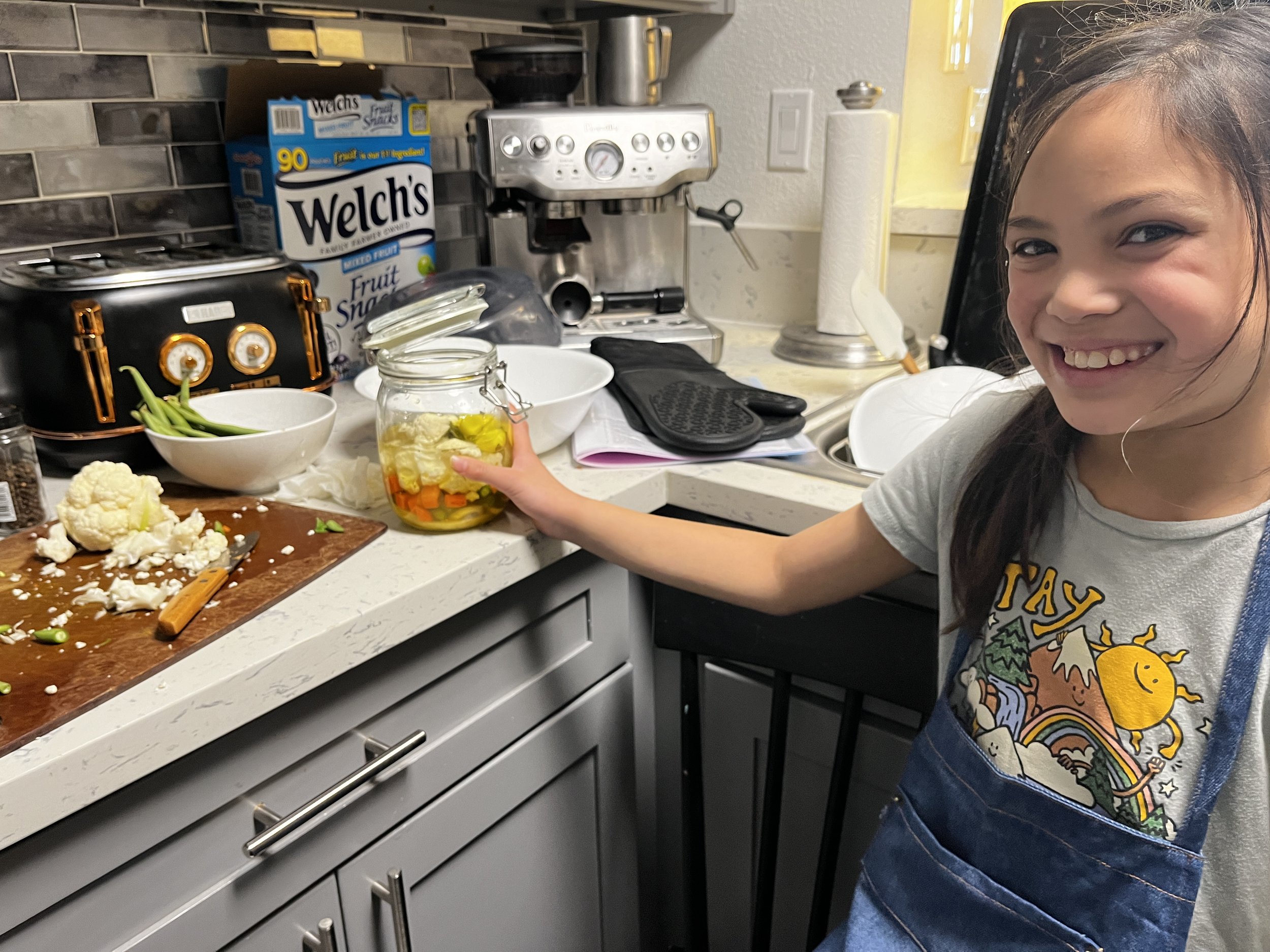
Fruit leather and mint tea
Mediterranean Quinoa Salad
Pickled Garden Veggies
Vegetable Soup
Viking Flat Bread and Blueberry Jam
Cheesy Broccoli and Rice Casserole
Italian Ice
Garlicky Green Beans and Honey Glazed Carrots
Pumpkin Bread
Salad made with home-grown greens (beet, carrot, garlic) and
Homemade Dressing
French Toast
Cranberry Sauce and Baked Acorn Squash
Harvest Granola
Potato Latkes
Flourless Chocolate Chip Brownies
Sweet Potato Casserole
Rosemary Focaccia Bread
Design Your Own Baked Pasta
Throughout the semester, the variety of recipes will reinforce technical skills, encourage innovative use of ingredients, and support interest in food culture. However, this class is about more than preparing tasty dishes.
Cooking offers hands-on experience with measuring, counting, fractions, tracking time, and temperature. For students in third grade and up, multiplication and division skills are needed to scale a recipe up or down. For students in fifth grade and up, additional math practice can come from calculating the cost of making a recipe vs. the price of a take-out version of a similar dish.
Following the step-by-step process-focused instructions of a recipe improves reading comprehension and shows that reading has practical benefits.
As foods are prepared, abstract concepts such as chemical reactions become relevant and understandable to children.
Cooking requires problem-solving and resilience to find solutions when a recipe does not come together as planned.
Many recipes we will prepare utilize basic ingredients that the student may already have in their pantry, demonstrating that home-cooked meals are manageable and can be fast and straightforward to prepare.
The kitchen is an excellent place for children to engage their senses experientially. They can knead, toss, pour, smell, chop, feel, and taste foods, all while having fun and learning without even realizing it.
Students will be encouraged to flavor dishes with herbs and spices and challenged to try their own variations, customizing recipes to suit their flavor and dietary preferences.
Cooking can teach children responsibility as they learn specific tasks to contribute to meal preparation and cleanup.
Acquiring ingredients from the grocery store, farmer’s market, or even harvesting their own herbs, fruits, and vegetables helps children understand where the ingredients that make up their favorite meals are sourced. Purchasing fresh, locally grown ingredients supports farmers in your area. For the Cooking 3/4 class: Students will be encouraged to visit a farmer’s market or pick-your-own farm to choose local seasonal ingredients.
Making a grocery list before shopping helps a child learn about planning and making informed choices about healthy foods. Choosing whole-food ingredients reduces packaging waste and instills the values of environmental consciousness.
Preparing recipes from other countries allows children to experience new flavors and textures. This exposure to diverse cuisines opens a child’s mind to different cultures, offers a geography lesson, and promotes awareness, understanding, and appreciation of culinary traditions and practices worldwide. For the Cooking 5-8 class: Each week, students will be encouraged to research two new facts about the recipe’s country of origin to share with the class.
Cooking allows children to learn more about their own heritage and family traditions through treasured recipes passed down through the generations.
Woodworking
Teaching children to make useful and beautiful things with their hands is a fundamental element of the Waldorf curriculum from kindergarten throughout the grades. Younger students develop strength and coordination in their hands and fingers through practical and meaningful activities like woodwork. In addition, improved fine motor skills foundationally prepare students for writing, drawing, and artistic work in grade school.
Learning to skillfully use their hands not only develops the child's sense of self-reliance and confidence, but hand skills also awaken creative powers, promote a sense of reverence for craftsmanship, and instill respect for the makers of the world.
Additionally, woodwork helps the child acquire the following traits and skills:
● Patience and perseverance are developed with projects that take days or weeks to complete, allowing the child to extend their learning through in-depth experimentation with tools, techniques, and materials over time.
● Working with hands strengthens forces (behaviors) that are weak. For example, it encourages thinking in the dreamy child, feeling in the overly intellectual child, and stimulates activity in the weak-willed child.
● Working with hands builds the capacity to solve unexpected problems. Students learn to notice mistakes and figure out ways to correct them.
● Working responsibly with real tools requires attention to detail, which builds concentration and focus.
Rudolf Steiner explains that the development of adult qualities, such as sound judgment and balanced thinking, depends far more on whether the child has learned to use his hands and fingers in practical ways than exercising logical thinking in later life.
Swedish neurophysiologist Matti Bergstrom says, "The density of nerve endings in our fingertips is enormous. Their discrimination is almost as good as that of our eyes. If we don't use our fingers in childhood and youth, we will become 'finger-blind,' and this rich network of nerves will be impoverished, which represents a huge loss to the brain and thwarts the individual's overall development."
To paraphrase Waldorf woodwork teacher, Bernard Graves, motor activity evolves into skill when the child responds sensitively to the nature of the materials and the correct use of tools. Likewise, willpower is transformed into a beautiful form when working artistically with design, color, and shape. And when these two aspects are combined in work, the child has a sense of fulfillment and true purpose in their efforts. Work, which might otherwise be an insignificant act, is raised to the status of a virtue.
Woodwork is active, hands-on learning at its best, offering a completely different set of sensory experiences to captivate a young student's interest. The smell and feel of wood, working with real tools, and the sounds of hammering, sawing, and sanding—these experiences offer the child's hands and mind opportunities to imaginatively create, solve real problems, and use strength and coordination to complete a finished piece. Woodworking's practical, repetitive nature teaches patience in subtle but very effective ways. Once the child realizes that they can't move to the next step until the previous has been completed, they'll slowly begin to learn to be more patient as the importance of the process emerges. Through the building of "will forces," woodworking is incredibly empowering for all children, especially those who struggle with the notion of things being "too hard" to accomplish. Woodworking teaches grit and determination.
Woodworking teacher Peter Moorhouse (The Importance of Woodwork in Early Childhood Education) explains, "Mathematical thinking is developed, scientific knowledge is gained, technological understanding is developed through working with tools, and children become engineers as they construct. Woodwork is exceptional for developing children's creative and critical thinking skills. As children tinker and experiment with the possibilities of wood and tools, they then go on to express ideas and resolve their work. But woodwork is not just about what children make—it is all about the changes within the child. Woodwork significantly impacts children's self-esteem and confidence, and it develops a sense of agency—that 'can-do' mindset."
Once the child is immersed in woodwork, grownups will likely observe high levels of engagement, deep focus and concentration, and increased persistence and perseverance when faced with challenging tasks. In addition, because each project takes time and effort to produce, woodwork offers an antidote to our fast-paced, immediate gratification society by providing hands-on learning experiences that require patience.
Adults may wonder: "How can younger children safely use real tools, such as saws, drills, and hammers?" Woodwork becomes a low-risk activity when basic safety measures are implemented, and appropriate tools are introduced and monitored responsibly. We will cover the safe use of tools, and each project will build upon the previous, both in skills learned and tool usage. Some tools require more significant assistance and supervision for your child to use safely, so please be readily available to support your child's learning during woodwork class time.
Exercise, Adventure, & Circus
Classes will follow the routine of an opening, warm-up, various activities (some that connect with the 3rd and 4th graders daily lesson themes), and a cool down and closing.
Activities will include clown exercises, imaginative stories with work out aspects, moving and guessing games, and circus balancing skills. The movement challenges will seek to help integrate reflexes, cross the midline, build strength and calm the nervous system. Some games will have social interaction as a key goal, to enhance the students contact with each other and create fun.
Seasonal Crafting
Description Coming Soon!
